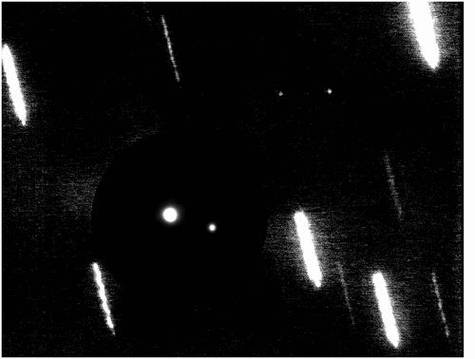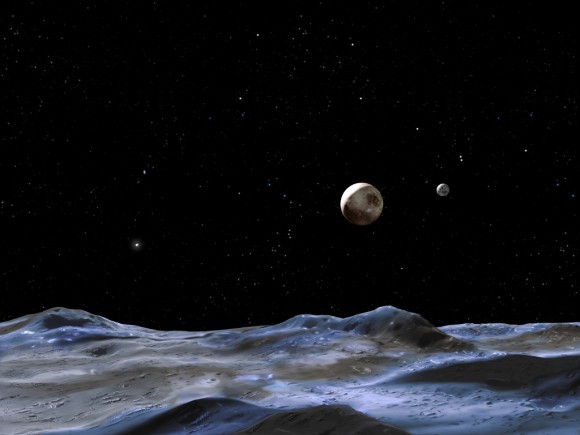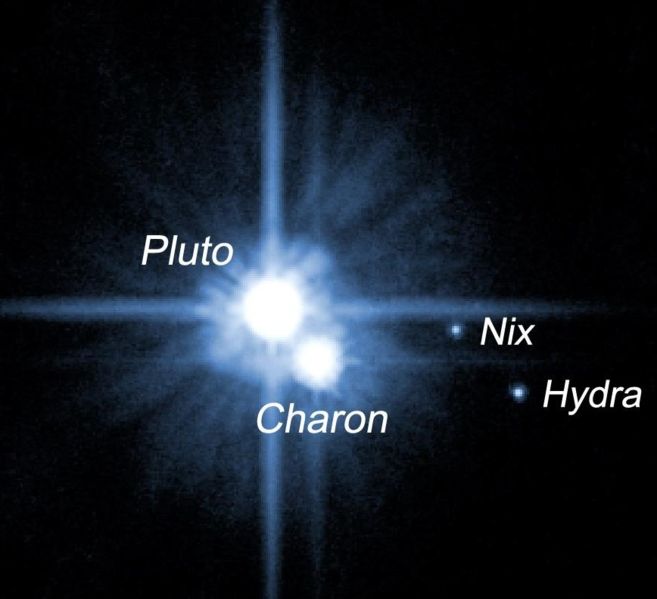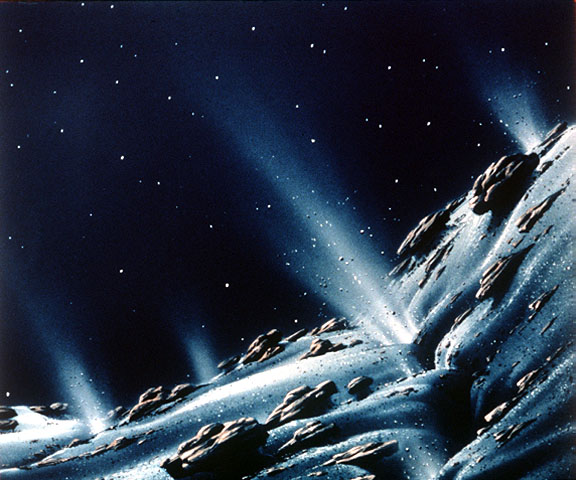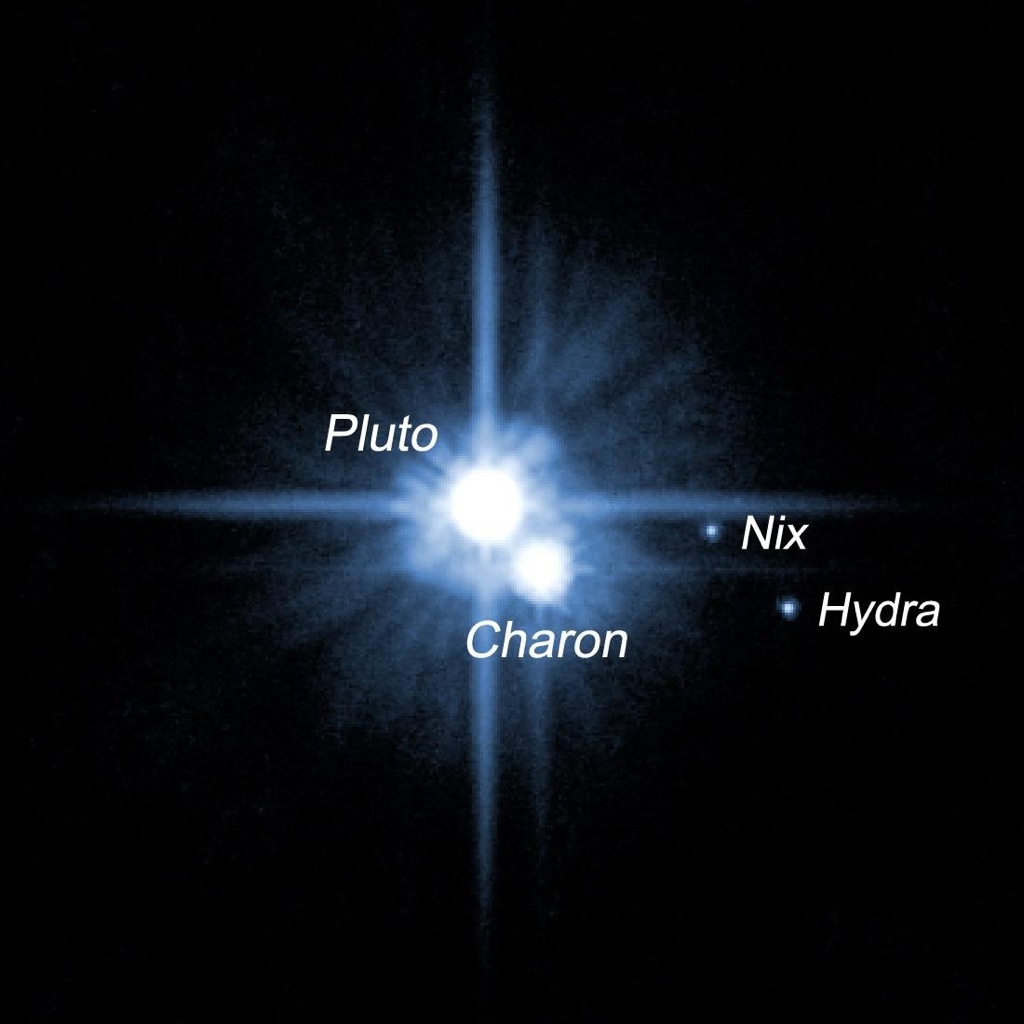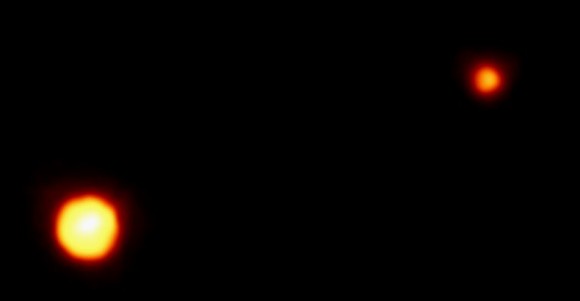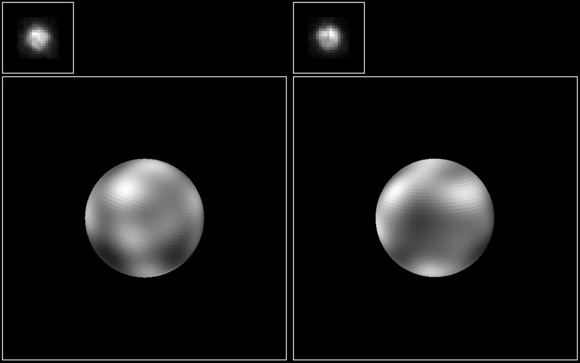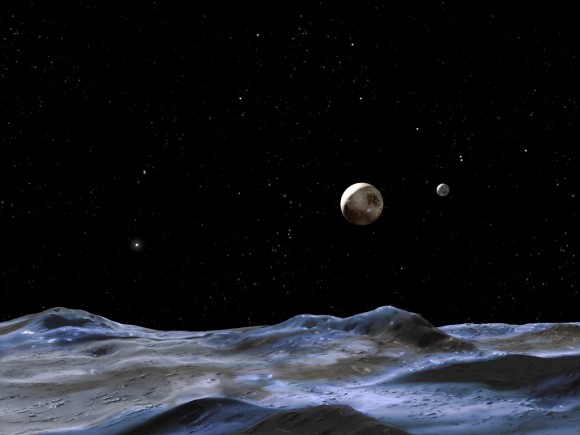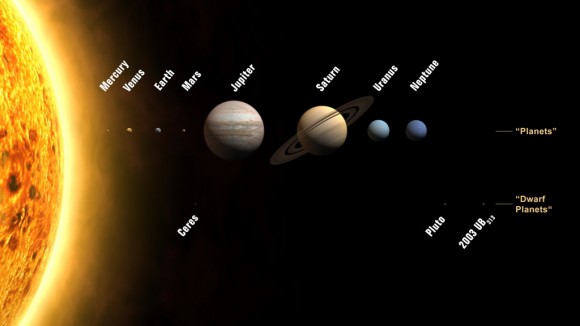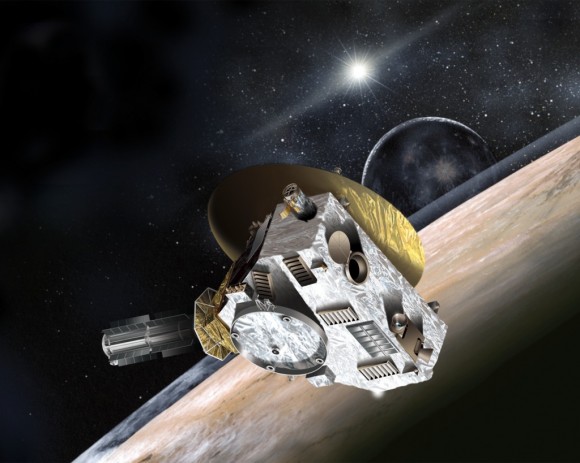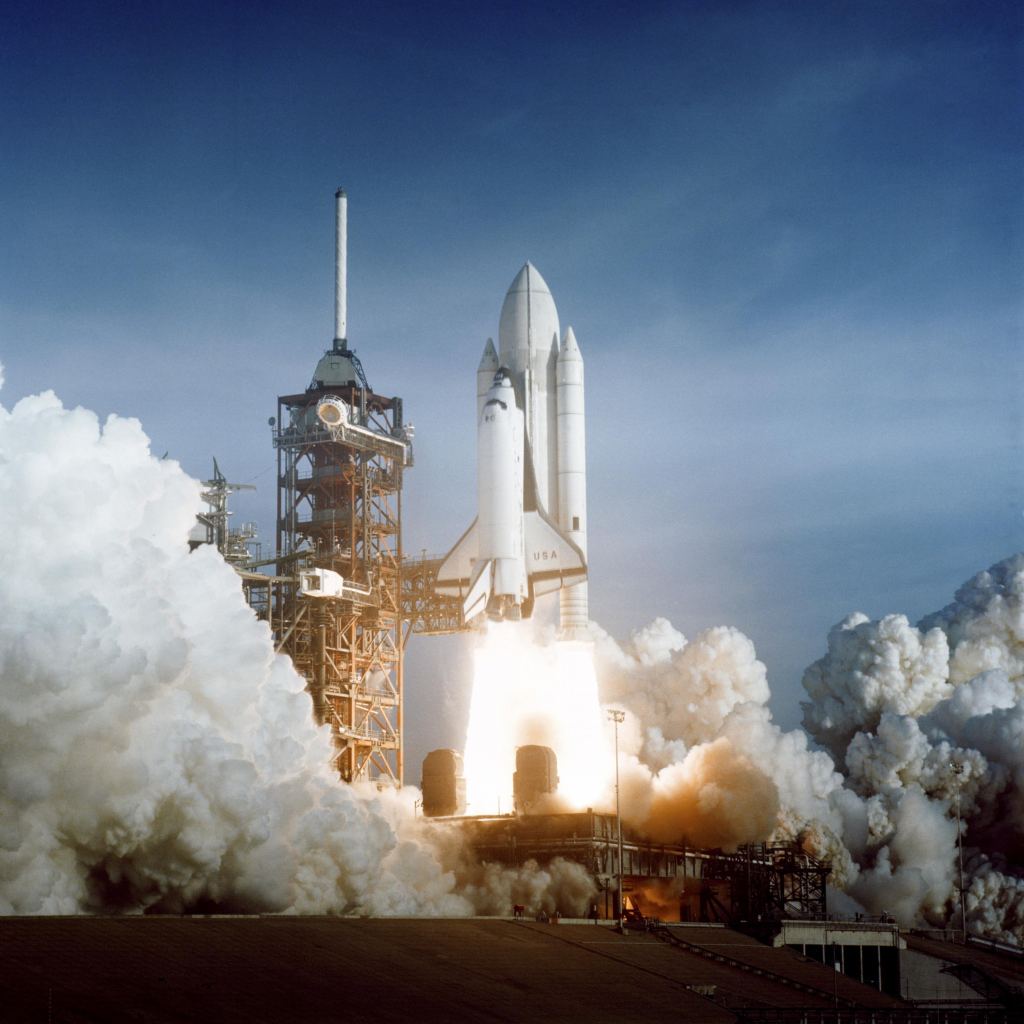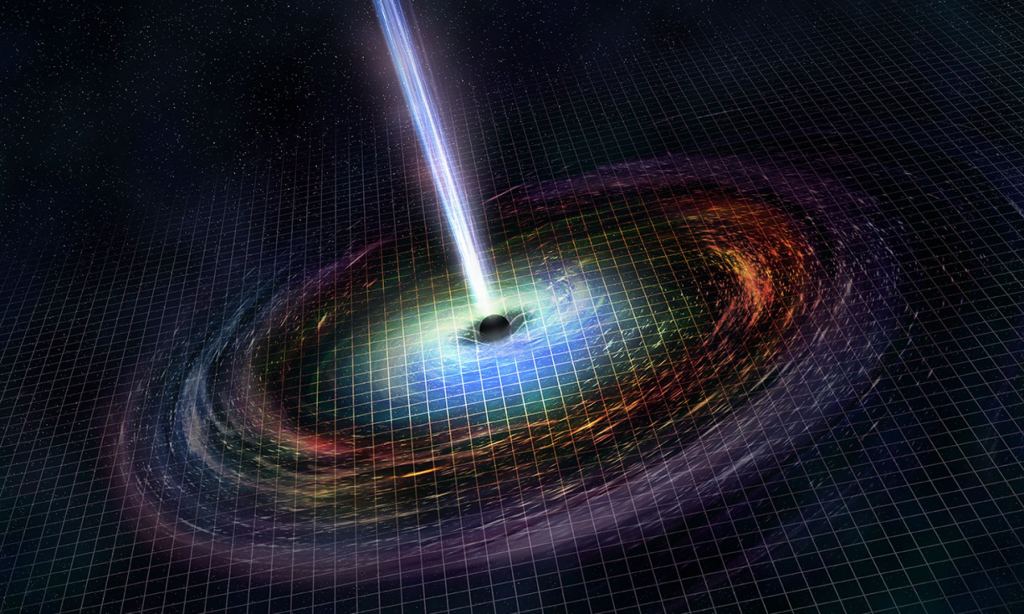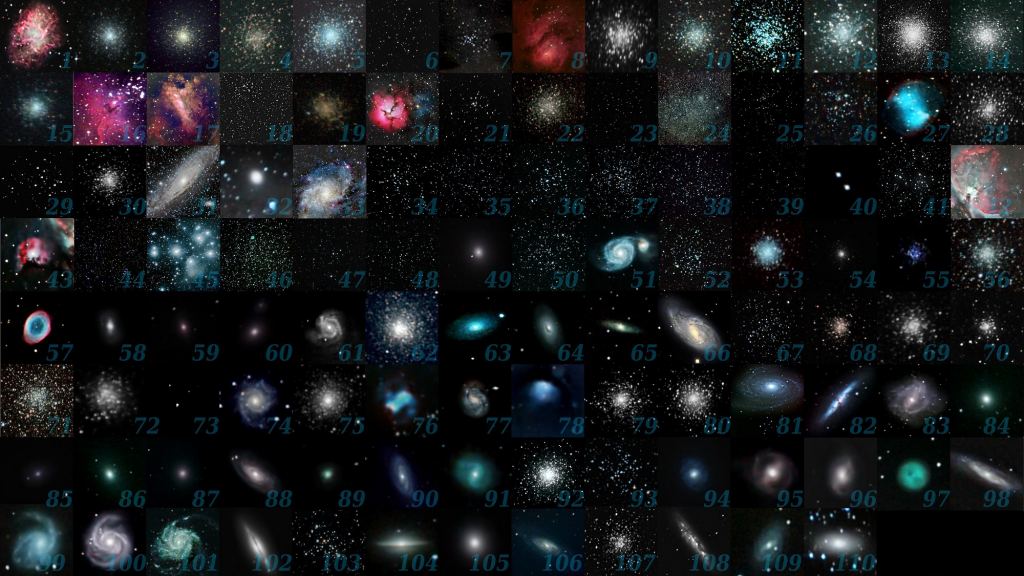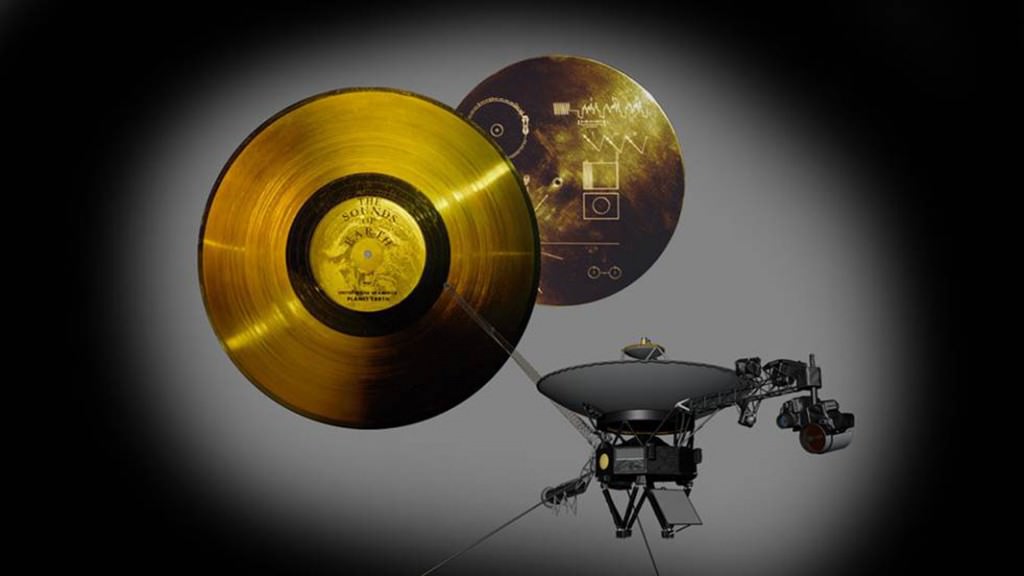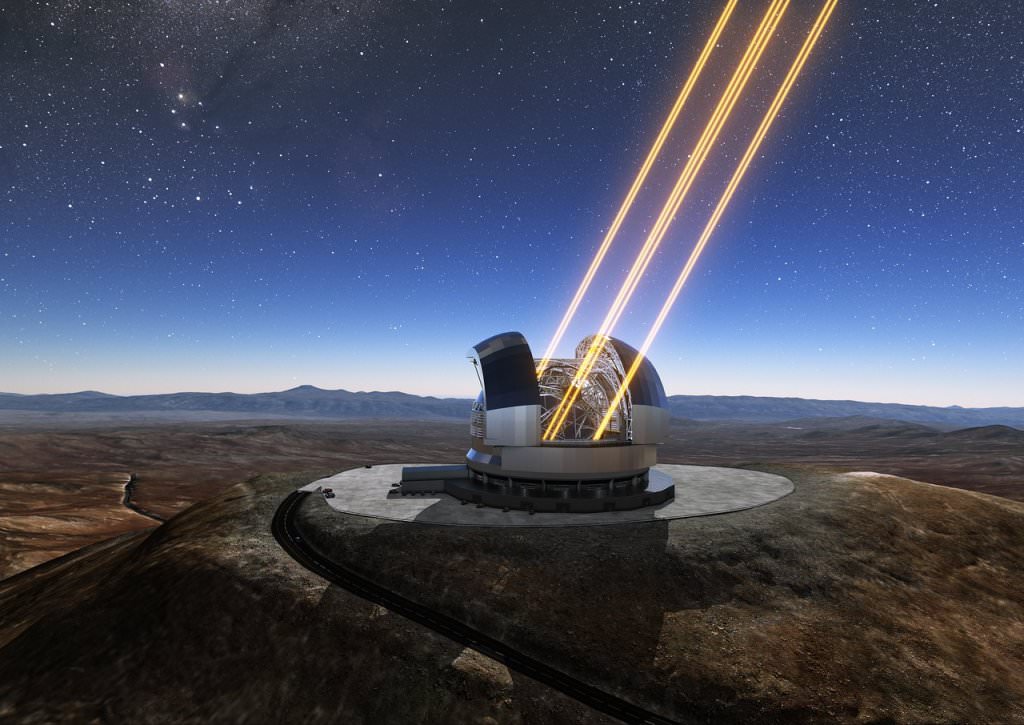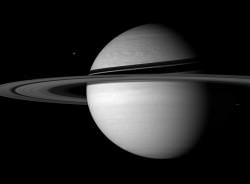Take a look at the Solar System from above, and you can see that the planets make nice circular orbits around the Sun. But dwarf planet’s Pluto’s orbit is very different. It’s highly elliptical, traveling around the Sun in a squashed circle. And Pluto’s orbit is highly inclined, traveling at an angle of 17-degrees. This strange orbit gives Pluto some unusual characteristics, sometimes bringing it within the orbit of Neptune.
Pluto takes 248 years to complete one full orbit around the Sun. During this journey, the orbit of Pluto ranges in distance from the Sun following an elliptical orbit. At its closest point, it can be 30 astronomical units from the Sun (1 AU is the distance from the Earth to the Sun). At its furthest point, Pluto is 39 AU from the Sun.
Astronomers call this orbit eccentric because Pluto follows an orbit that traces out an elongated ellipse around the Sun.
Pluto’s orbit is also highly inclined. This means that it doesn’t orbit within the same plane as the rest of the Solar System. Instead, Pluto orbits at an angle of 17-degrees. For part of its orbit, Pluto is above the plane of the ecliptic (where the other planets orbit) and other times it’s below that plane.
Because the orbit of Pluto varies so widely, it can switch places with Neptune, orbiting closer to the Sun. The last time this happened was on February 7, 1979. Pluto remained closer to the Sun than Neptune until February 11, 1999. And the previous time it happened was back in the 1700s.
With its low mass, Pluto’s orbit is actually quite chaotic through its interactions with Neptune. Although astronomers can predict its position forward and backwards in time for a few million years, the uncertainties mount up, and it’s impossible to know where it’ll be in the far future.
As you probably know, Pluto is no longer a planet. This was a decision handed down in the 2006 meeting of the International Astronomical Union. Although Pluto orbits the Sun and has enough mass to pull itself into a sphere, it hasn’t cleared out its orbit.
They’ll never collide, though. Pluto is in a 3:2 resonance with Neptune. This means that for every three orbits Neptune makes going around the Sun, Pluto makes two. They always end up in the same positions. This whole process takes about 500 years to complete.
Just to give you an example, Pluto’s mass is only 0,07 times the mass of all the other material in its orbit. Earth, in comparison, has 1.5 million times the mass of everything else in its orbit.
Because it hasn’t cleared out this material, Pluto was designated as a dwarf planet, along with asteroid Ceres and the newly discovered Eris, which is actually larger than Pluto.
We have written many interesting articles about Pluto here at Universe Today. Here’s facts on Pluto.
Source:


